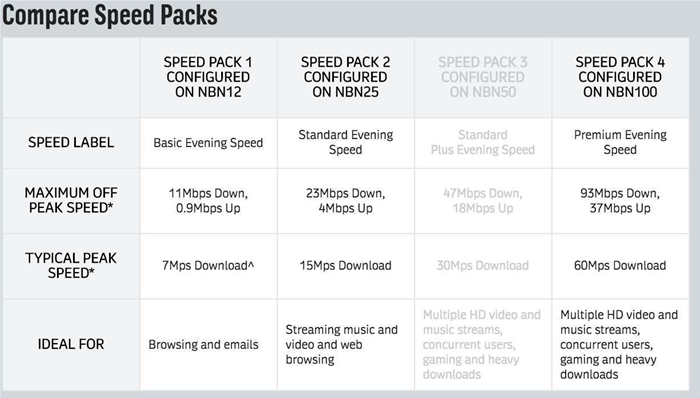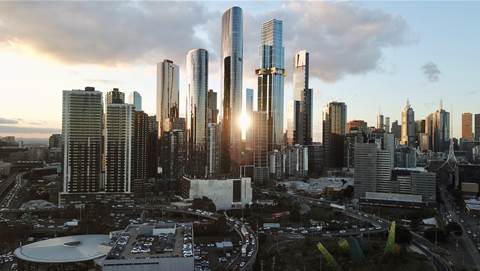Optus is the first large NBN retail service provider to start publishing actual download speeds experienced by a subset of users between 7pm and 11pm in line with a ‘best practice’ measure proposed by the ACCC.

A survey of NBN retailer sites by iTnews shows that RSPs have - to varying degrees - adopted the “voluntary” guidance published by the ACCC in August on how to advertise speed claims for NBN services.
While the guidance is voluntary, the ACCC has made it clear it is watching NBN RSPs closely.
Telstra was forced to refund 42,000 customers sold high-speed plans that customers’ lines could not support.
The ACCC has also threatened court action for RSPs suspected of misleading advertising.
At present, Optus is setting the bar in terms of the level of detail it is providing around NBN speeds.
It is the first of the seven main NBN RSPs to publish actual “average peak download speeds” every quarter - drawn from a sample of its customers - at the point of sale.
Its first dataset - current as at October 29 - shows NBN users on the 12Mbps tier see an average 9Mbps in the evening peak; users on the 25Mbps NBN tier get an average of 19.4Mbps; and users with 100Mbps plans see an average 75.2Mbps.
The evening peak is between 7pm and 11pm, and is typically when broadband users in Australia face the biggest speed problems due to network congestion.
Optus has also rejigged its advertising to show the range of “maximum off-peak speeds” that NBN customers can expect, as well as the “typical” - rather than actual - speeds they are likely to see in the evening peak.
“Optus NBN advertising utilises industry standard speed labels which provide customers with information including maximum off peak speeds and typical evening peak speeds they can expect,” an Optus spokesperson said.
“These speeds labels are determined by speed tests conducted in line with the guidelines provided by the ACCC. All RSPs are required to conduct these tests.”
Approaches vary
Other RSPs are updating their plans, dropping “up to” claims and experimenting with different levels of speed disclosures.
Some indicated they were moving more cautiously, measuring how different types of changes to wording and transparency were being received by prospective new users.
Telstra’s NBN plans now advertise “15Mbps typical minimum speeds between 7pm-11pm” on the NBN 25Mbps speed tier.
It has two “speed boosts”, offering minimum speeds in the evening peak of 30Mbps (on the 50Mbps NBN tier) or a minimum 60Mbps on NBN Co’s 100Mbps wholesale product.
TPG updated its NBN plans over the weekend. Its speeds are now offered in ranges of:
- “Between 8Mbps and 12Mbps” down (with 1Mbps up)
- “Between 18Mbps and 25Mbps” down (with uploads “between 1Mbps and 5Mbps”) and
- “Between 40Mbps and 100Mbps” down (“an upload connection speed which will range between 1Mbps and 40Mbps”).
Internode has published a sizable table of speed ranges, with even greater degrees of variability.
Its top “platinum” retail tier comes with a cover-all range of “between 25 and 100 Mbps download [and] between 1 and 40 Mbps upload” for all fixed-line NBN access technologies.
Over at iiNet, both its “basic” (12Mbps) and “boost” (25Mbps) speed tier offerings have speed ranges that begin at 8Mbps. Its highest speed tier offers a range of “between 25Mbps and 100Mbps”.
The recently relaunched, Vocus-owned iPrimus has gone with a different interpretation. It presents three speed tiers in terms of the number of “simultaneous devices” a home user could expect the service to work for.
Vocus-owned Dodo similarly offers three tiers that it describes in terms of the kinds of usage that the connection is typically able to support.
A Vocus spokesperson said the company had been continuing to review the way its brands advertised NBN services “since the issuance of the ACCC guidance on broadband speeds”.
The call to action
All parts of the NBN ecosystem - including NBN Co itself - is under pressure to make better representations about speeds experienced by NBN users.
Part of that pressure is due to a rapid increase in the number of complaints about the NBN.
NBN Co is pushing RSPs to provide accurate line speed data measurements to end users. Though NBN Co collects this data, it says it should not be the one to release the information.
RSPs also face the looming threat of actual speed data being published by the ACCC through its broadband monitoring program.
The first results - due early next year - could embarrass RSPs whose services don’t match their advertised speed claims, and invite regulatory scrutiny.






















